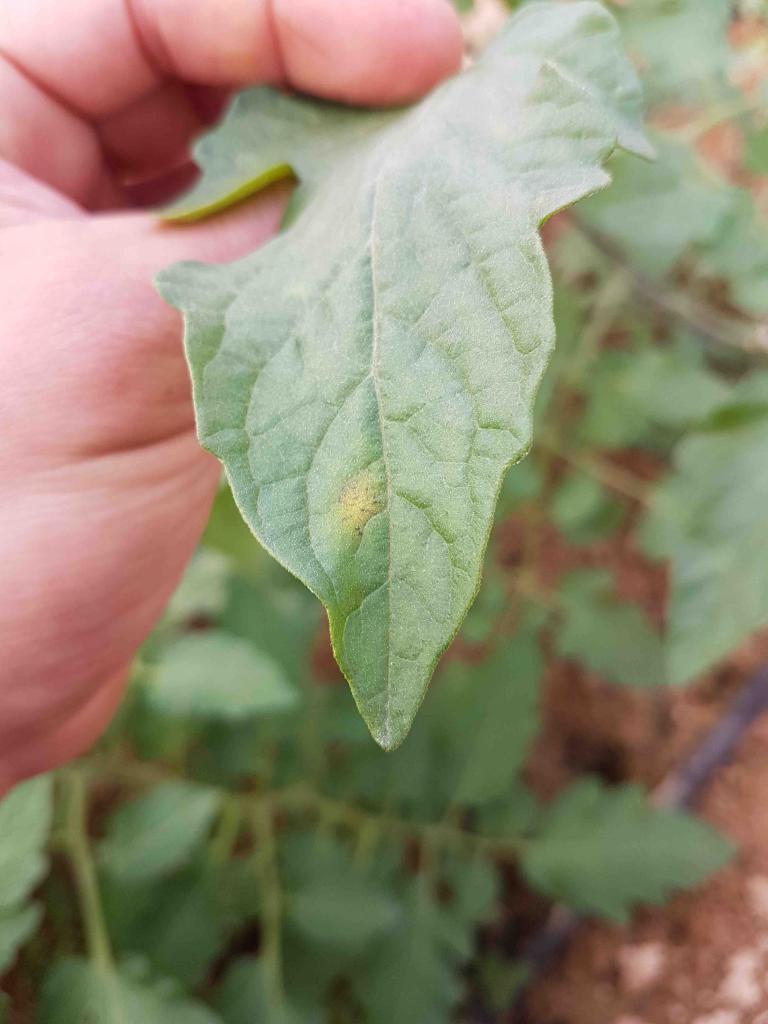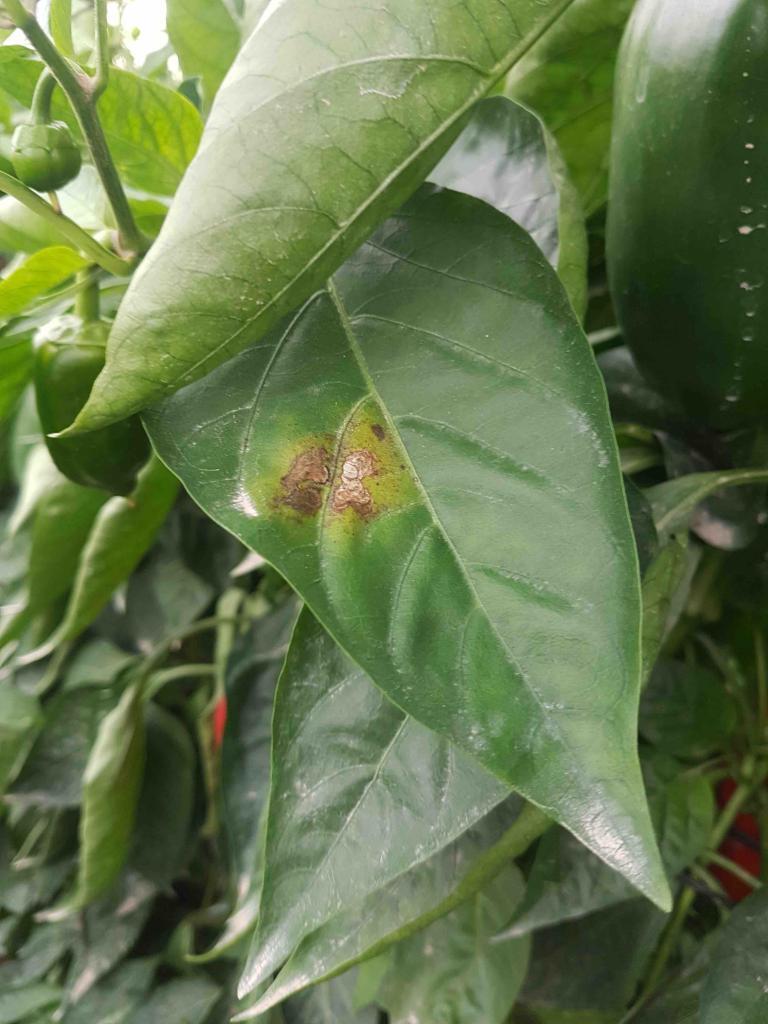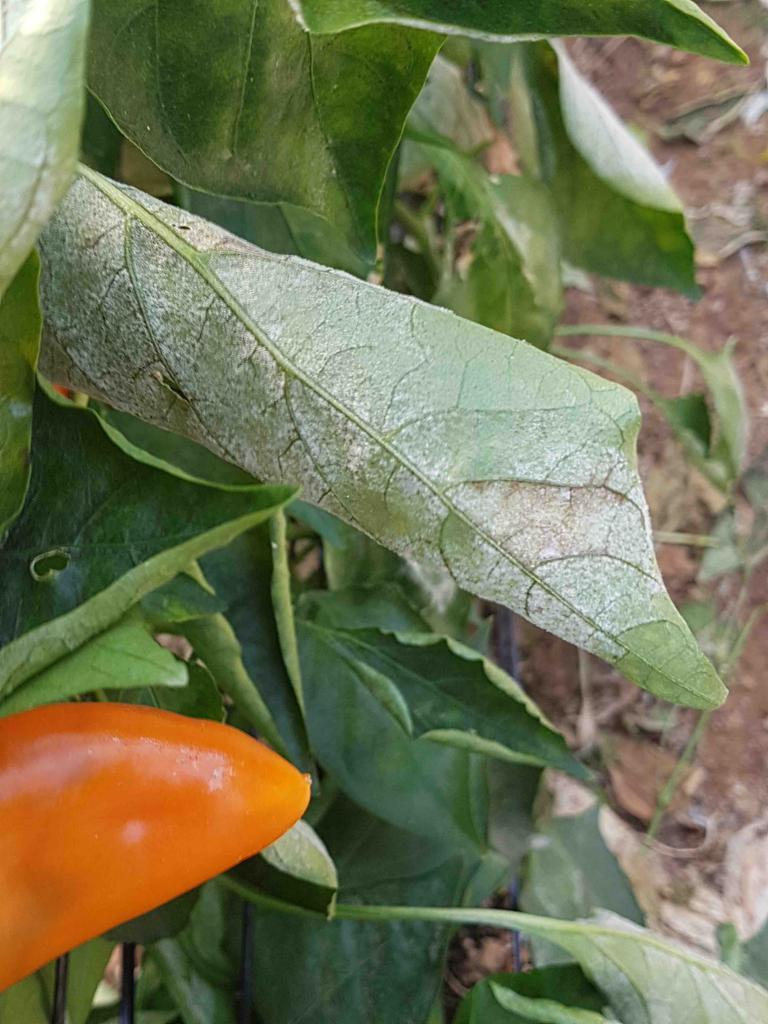Leveillula Taurica Alert
Symptoms begin as yellow spots on the front surface of leaves and white or grayish fuzzy spots with a powdery-like texture on the back of leaves.
Powdery mildew is a fungal disease that can cause considerable loss due to nutrient removal, reduced photosynthesis, increased respiration and transpiration, and impaired growth.
The leaves drop if infestations reach a critical point.
The sooner the better: It’s easier and more cost effective to control and overcome powdery mildew during the initial stage of infestation. Make it a routine to monitor the field regularly and search plants for the presence of powdery mildew on a weekly basis.
Effective control requires spraying with high pressure and high volume of water; good coverage is of the essence.
The following is a list of generic names for fungicides known to help manage powdery mildew and is sorted into groups according to their mode of action:
Group 1: Penconazole, Triadimenol, Tebuconazole, Myclobutanil, Tetraconazole, Propiconazole, Prochloraz, Cyproconazole , Difenoconazole, Fenbuconazole, and Triflumizole; Group 2: Azoxystrobin, Pyraclostrobin, Trifloxystrobin, and Kresoxim-Methyl; Group 3: Sulfur, copper sulfate, bicarbonates, mineral oils, neem oil, and detergents\soap-based products
*Sulfur can cause injury to foliage and fruit when applied on days with a temperature above 32 degrees Celsius. Do not apply within 2 weeks of an oil application.
*When powdery mildew is present, yet the symptoms have not appeared, consider spraying applications of fungicides once every 14 days. Do not use products with the same active ingredient in consecutive treatments except in group 3, as there are no restrictions there.
*Use fungicides belonging to different groups to prevent powdery mildew from developing a resistance to specific chemicals. It is important to remember that if powdery mildew develops a resistance to fungicides within a group, the pathogens are likely to be resistant to all members of that group (except group 3).
*Some commercial fungicides have two active ingredients and two modes of action. After using such products, take into account that now you have two groups that you already used. Make sure to exclude those two active ingredients in the next application.
Sulfur (dust, wettable, flowable, or micronized) and potassium bicarbonate
Bacillus pumilis and bacillus subtilis
*Names marked in red are considered to be highly poisonous to beneficial insects.
*Names marked in green are considered to be organic and IPM (integrated pest management) compatible.
Image Gallery


